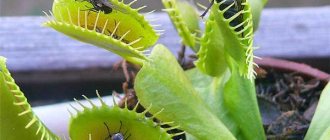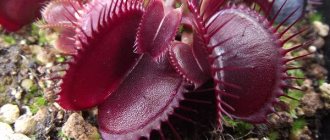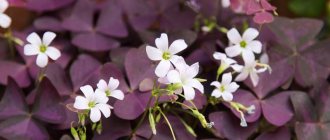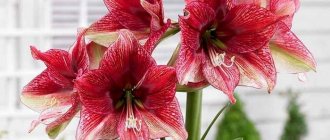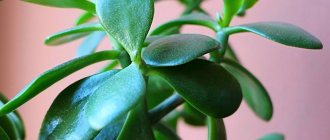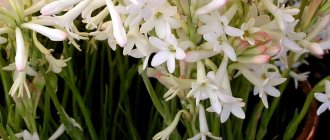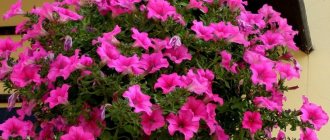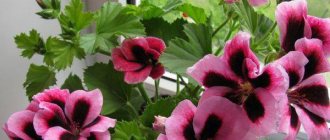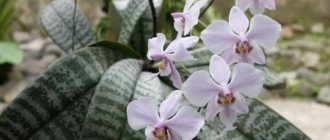Are you a skilled gardener and love to surround yourself with all kinds of vegetation? Then you are at the right place. True, we will not tell you about caring for violets, ficus or echeveria - we have moved on. Bonsai is the hero of today's material. What to do with a dwarf Japanese tree if it ends up in your apartment? How to care for bonsai? Let's study this topic more carefully.
Bonsai is a tiny tree that has been used for decoration in many traditional Japanese homes for centuries. However, bonsai is also quite popular in our country as an unusual and “living” part of the interior. The main components of proper care: light, soil, watering, replanting, fertilizers.
Light
The tree needs 6 hours of sunlight every day. If the plant is in a dark place, then the lighting should be increased to 12 hours a day. Do not overdo it with electric light - the plant may be damaged. It is clear that in our climate it is difficult to care for bonsai, providing many hours of natural light. Especially when it's winter or autumn outside. However, try to move the tree during the day, maybe move it to another room, to provide the plant with the highest possible level of light and comfort.
Crown formation in Crassula
Crassula (crassula) can also take the form of a mini-tree. The money tree is a fairly popular plant. Many believe that finding a pot of this crop in an apartment certainly promises wealth. How fair this is, no one knows. But if you have already got a fat one, give it a look so that it attracts attention.
The unusualness of pseudo-bonsai can be added if you choose some non-standard type of Crassula. For example, the most popular of them is the silver crassula. But we advise you to pay attention to Crassula ovata Hobbit.
The soil
Select soil for your type of plant in special stores. If you have a coniferous tree, buy soil for coniferous trees; if you have a deciduous tree, plant it in the appropriate soil. Good soil is when it is “aerated”, i.e. the air moves back and forth. It also ensures proper interaction with water. The liquid should sufficiently moisten the plant and flow down. The optimal soil pH should be between 6.5 and 7.5.
Indoor bamboo
This plant is often called bamboo, although it is actually Dracaena Sandera. It is unpretentious and can grow both in soil and in water. As in the case of ficus, from several copies of this dracaena you can “weave” one plant with a trellised stem.
In general, this is a very malleable plant from which you can “twist” anything. How do you like these “Christmas trees”?
What about fences like these?
Dracaena Sandera is also good with absolutely straight stems. Just tie several of these “bamboos” into a bunch and you will get a “tree” with a thick trunk and a green crown.
Watering
How often should a tree be watered? Once a day, a week or maybe 2 times a month? This point is the most difficult in matters of how to care for bonsai. Nevertheless, everything matters in watering: what time of year it is, the daily portion of sunlight, the type of soil, the type of tree and its age. You can develop a suitable watering system only by observing the appearance of the plant and the dryness of the soil. If the tree becomes dull and the ground is 2-3 cm dry, it’s time. Watering may be required once a day or only 3 times a week. Over time, you will learn to understand how much your bonsai needs to “drink”. So, general watering tips for all trees:
- Water the plant preferably in the morning.
- In summer or other warm days, water the tree more deeply than usual.
- In winter, water no more than once a week. During this period, the plant is dormant.
- Watering is directly related to sunlight. The longer the tree stays in the illuminated place, the more water it requires.
- During the period of bonsai development and growth, try to water it regularly so that the plant adjusts to the water supply schedule.
- Also, don’t forget to check the soil for dryness. Carefully feel the soil with your finger without touching the roots.
Adenium - bonsai for the lazy
Adenium is a slow-growing shrub or small tree with a large fleshy trunk. The thickening at its base is called the caudex, most of which may be underground.
The culture comes from arid countries, which is why it needs such a thick stem - it accumulates water and nutrients. This flower “camel” is also called the desert rose, because the plant blooms very beautifully and profusely. During the bud blooming period, adenium looks great. The color of the flowers can vary from white to dark crimson.
Growing adenium in a home flower garden is not at all difficult. They are very exotic and can easily replace bonsai.
Transfer
How to care for bonsai without replanting? Alas, sooner or later you will still be faced with the need to replant the tree. The best time to move a tree to another “home” is spring. During the cold period (dormant time for bonsai), the plant strengthens its roots and is psychologically ready for replanting.
In general, the plant should be replanted annually or only once every 5 years. By the way, young trees will more often require moving, and older bonsai can easily remain in the same pot for up to 5 years. If the leaves of the tree turn light yellow, young ones appear, and buds form on the stem, it’s time to replant.
Further care
It is better to keep Crassula in a well-lit place with little shade. The ideal solution is the south side of the apartment. Here the plant will receive enough sunlight .
The daytime temperature should be 19–23°C, the night temperature should be 9 and 15. In winter, the Crassula tolerates dry indoor air without any problems.
Care requirements:
- you should beware of drafts;
- the leaves should not come into contact with the window frame or glass ;
- In order for the fat woman to avoid deformation, it must be turned regularly;
- Fertilize the plant after 3.5 months with a special liquid solution, which can be purchased at a flower shop.
In the spring and summer, Crassula needs careful watering . In winter, you should wait until the soil dries out. Proper, regular watering will help the trunk and branches thicken naturally.
Remember!
If the succulent is provided with the necessary conditions, its crown will become powerful and beautiful.
Fertilizers
Trees are usually planted in small pots, so bonsai are in greater need of feeding. Potassium, nitrogen and phosphorus fertilizers are well suited for the plant - they are responsible for the green color of the leaves, the development of roots and the appearance of flowers. Moreover, you need to care for your bonsai with fertilizers regularly at least 3-5 times throughout the year.
Don't forget about the appearance of the bonsai! The tree takes on new beautiful shapes with proper pruning of branches and shoots. It is better to remove excess branches in the spring and only with sharp tools, so as not to accidentally harm the plant. As a sign of gratitude for your careful care, the bonsai will decorate your home and fill it with a lemon-pine aroma for many years.
Text:
How to care for bonsai with your own hands.
Choosing a pot
Choosing the right pot for your bonsai is one of the first and most important steps in its creation and can make or break its care. Selecting a container requires the gardener to consider several issues. The pot should be large enough to adequately hold the plant and allow its roots to grow steadily, but small enough to limit and control growth, so it is confined to this container for a long time.
Choosing soil for indoor bonsai
Not every soil is suitable for your tree. The goal is to find soil that doesn't sit too long but still manages to retain its water. It should also contain fine particles to ensure proper aeration, allowing oxygen to reach the roots.
There are special soils on the market made just for bonsai (the easy route), or you can mix your own (if you're feeling ambitious). It is also necessary to add fertilizer to the soil during the growing season (usually early spring to mid-autumn).
Watering and fertilizing
The most important rule: never water according to instructions. Ignore the label attached to your bonsai that says you need to water every "x'days". Instead, keep an eye on your tree and only water when needed. Please read the Watering Rules page for more details.
It is a good idea to use a moisture meter until you become familiar with the requirements of your bonsai tree. Watering should be done using a watering can or hose, which should distribute the water gently enough so as not to displace the soil. Water should be applied until it begins to flow out of the holes in the bottom of the pot. Good rain is usually enough.
The most popular forms of indoor bonsai
According to this parameter, the classification was made by Japanese flower growers, so all groups have “native” names.
Chokkan. This is a bonsai with a straight trunk perpendicular to the ground. The trunk has the shape of a regular cone, evenly and symmetrically covered with branches.
Mayogi. Also a vertical trunk, but some curvature and lack of symmetry are allowed. If the chokkan resembles a garden tree, then the mayogi is a wild specimen.
Shakan. Strongly leaning bonsai.
Fukinagashi. This type of miniature symbolizes a tree that is bent by a gust of wind. It has a very strongly inclined trunk. The branches look in the direction of the slope.
Hokidachi. This shape resembles a small fan. There is a straight trunk, which, closer to the top, diverges to the sides in the form of a regular fan.
Kengai. This is a bonsai with a hanging, “ampeloid” shape. The branches and leaves of the plant may bend over the edge of the pot. As an option - Khan-kengai - a semi-hanging form, the drooping is not so pronounced.
Isitsuki. This is "bonsai growing on a rock" - the literal translation. In reality, stones are placed in the pot as rock. The roots of the plant are entwined with these stones in a very picturesque way.
Sokan. This is a form of bonsai that has two, almost identical, trunks. Literally translated it means “twins”. The trunks must grow from the same root.
Sankan. Three trunks.
Kabudachi. This is a multi-stemmed bonsai that looks like a bush. The trunks can be different in height and thickness, but there must be an odd number of them - this must be strictly monitored.
Yose-Yu. This is an imitation of a forest plot in a pot. There may be several trees of different varieties and sizes.
Ikadabuki. Translated, this form means “raft”. It is a trunk practically lying, knocked to the ground. Its branches grow vertically upward.
Making a choice between these types is not an easy task, because each of them is beautiful and wonderful in its own way. See what these styles look like in the photos and choose the one that suits you!
Choosing the right plant
- For apartment living conditions, you need to choose exclusively heat-loving trees and shrubs that can be constantly maintained at room temperatures.
a big mistake frost-resistant species for your apartment , such as pines, junipers, cypresses, larches, elms, maples, and fruit trees. They belong to garden bonsai and can stay indoors for no more than a week.
- To keep a bonsai in your room, choose from plants such as ficus, acacia, bougainvillea, pyracantha, jasmine, camellia, milkweed Mila, hibiscus, orange, lemon, coffee tree and many others.
Abu Shawka / Personal archive
Steven Severinghaus / Flickr.com
About the value of real bonsai
- Real bonsai is expensive . There are no cheap bonsai, especially if they are large bowls or rare exotic plants.
- When buying a cheap bonsai, you run the risk of purchasing a skillfully designed plant, and not an originally tall tree grown according to all the rules of this technique .
- Adult specimens of dwarf species are also no less expensive.
- Remember that the age of classic bonsai is more than one decade .
Andreas D. / Flickr.com
tsuppie/Flickr.com


